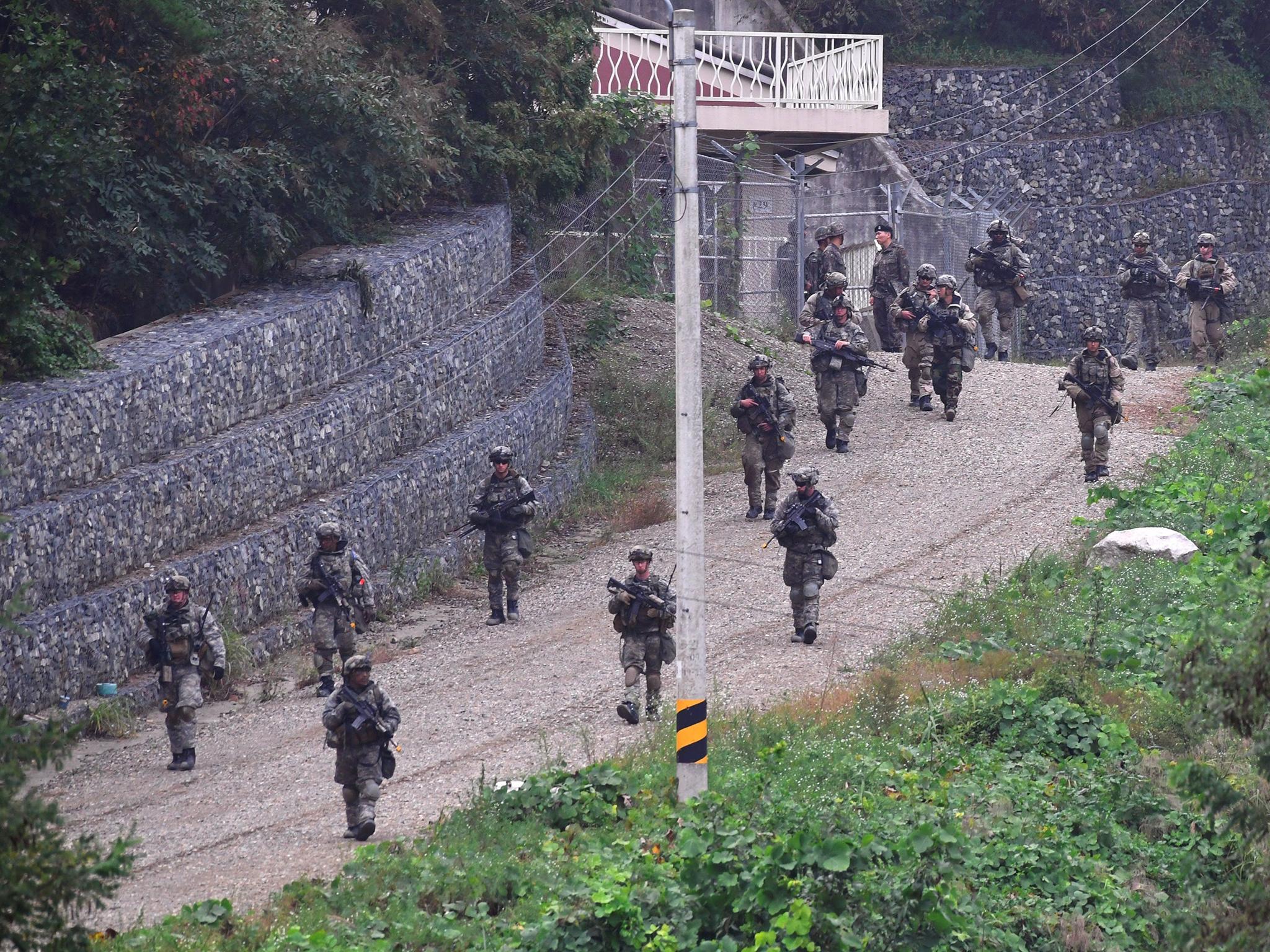Trump orders Pentagon to prepare options for reducing US troops in South Korea
Latest push coincides with tense negotiations with regional partner over how to share cost of military force

Your support helps us to tell the story
From reproductive rights to climate change to Big Tech, The Independent is on the ground when the story is developing. Whether it's investigating the financials of Elon Musk's pro-Trump PAC or producing our latest documentary, 'The A Word', which shines a light on the American women fighting for reproductive rights, we know how important it is to parse out the facts from the messaging.
At such a critical moment in US history, we need reporters on the ground. Your donation allows us to keep sending journalists to speak to both sides of the story.
The Independent is trusted by Americans across the entire political spectrum. And unlike many other quality news outlets, we choose not to lock Americans out of our reporting and analysis with paywalls. We believe quality journalism should be available to everyone, paid for by those who can afford it.
Your support makes all the difference.Donald Trump has ordered the Pentagon to prepare options for drawing down US troops in South Korea, just weeks before he holds a landmark meeting with North Korea’s leader, Kim Jong-un, according to several people briefed on the deliberations.
Reduced troop levels are not intended to be a bargaining chip in Mr Trump’s talks with Mr Kim about his weapons programme, these officials said. But they acknowledged that a peace treaty between the two Koreas could diminish the need for the 23,500 soldiers stationed on the peninsula.
Mr Trump has been determined to withdraw troops from the region, arguing that the United States is not adequately compensated for the cost of maintaining them, that the troops are mainly protecting Japan and that decades of US military presence had not prevented North Korea from becoming a nuclear threat.
His latest push coincides with tense negotiations with South Korea over how to share the cost of the military force. Under an agreement that expires at the end of 2018, South Korea pays about half the cost of the upkeep of the soldiers – more than $800m (£600m) a year. The Trump administration is demanding that it pay for virtually the entire cost of the military presence.
The directive has rattled officials at the Pentagon and other agencies, who worry that any reduction could weaken the US alliance with South Korea and raise fears in neighbouring Japan at the very moment that the United States is embarking on a risky nuclear negotiation with North Korea.
Officials declined to say whether Mr Trump was seeking options for a full or partial reduction of troops, although a full withdrawal was unlikely. They emphasised that rethinking the size and configuration of the US force was overdue, regardless of the sudden flowering of diplomacy with North Korea.
But Mr Trump’s meeting with Mr Kim injects an unpredictable new element. His enthusiasm for the encounter – and the prospect of ending a nearly 70-year-old military conflict between the two Koreas – has raised concerns that he may offer troop cuts in return for concessions by Mr Kim.
Defence secretary James Mattis added to those concerns last Friday when he suggested that the future of the US military presence might be on the table.
For Mr Trump, withdrawing troops would have multiple benefits, said Victor Cha, a Korea scholar at Georgetown University who was for a time under consideration to be ambassador to Seoul. It would appeal to his political base, save the United States money and give him a valuable chit in his negotiation with Mr Kim.
“But from the perspective of the US-South Korea alliance,” Mr Cha said, “it would represent a major retrenchment”.
Kelly E Magsamen, a top Asia policy official at the Pentagon during the Obama administration, said, “US presence in South Korea is a sacrosanct part of our alliance”.
The South Korean government reiterated this week that the troops were still needed and would not be pulled out as a result of a peace treaty with North Korea. But even close allies of president Moon Jae-in have raised doubts about the rationale for a long-term US presence.
“What will happen to US forces in South Korea if a peace treaty is signed?” Moon Chung-in, an adviser to the president, said in a widely read article published this week. “It will be difficult to justify their continuing presence.”
Mr Kim recently declared, through South Korean officials, that he would drop North Korea’s long-standing insistence that US troops leave the peninsula. Some experts argue that watching US soldiers depart is far less important to him than winning relief from economic sanctions.
For years, the US presence has been more important as a symbol of deterrence than as a fighting force. At their current levels, the troop numbers are down by about a third from the level in the 1990s.
As the South Koreans have become a premier fighting force – with their own special operations forces, the ability to oppose North Korea’s artillery along the Demilitarized Zone and now their own cyber forces – they have become less dependent on the United States. Most US troops have pulled back to well south of Seoul.
The New York Times
Join our commenting forum
Join thought-provoking conversations, follow other Independent readers and see their replies
Comments